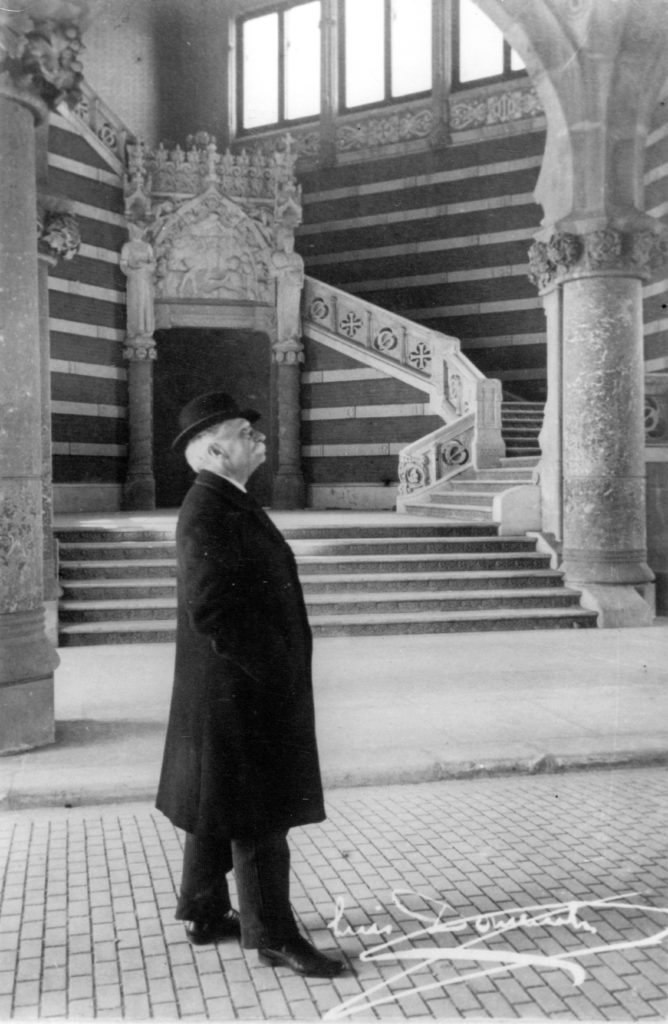Domènech’s architectural output ranges from urban projects to monumental complexes to small-scale works. He designed some of the most singular buildings in Art Nouveau Barcelona, such as the Fonda Espanya, Lleó Morera House, Fuster House and the Palau de la Música Catalana.
The architect Lluís Domènech i Montaner (1849-1923), considered the father of the Catalan Art Nouveau, was born into an educated, progressive family of Barcelona’s wealthy middle class. His father, Pere Domènech i Saló, was a prestigious bookbinder, and his mother, Maria Montaner i Vila, daughter of an old noble family in Canet de Mar, a town to which the architect was closely linked.

Upon gaining his degree in the exact, physical and natural sciences at Barcelona University and embarking on engineering studies, he chose to become an architect. After completing his degree at the Special School of Architecture in Madrid, he set out on a trip around France, Switzerland, Italy, Germany and Austria.
Back in Catalonia, Domènech began his professional career as an architect and in 1875 he became interim lecturer at the Barcelona School of Architecture, with which he was associated until 1920. His students there included other famous Art Nouveau architects such as Antoni Gaudí, Josep Puig i Cadafalch and Josep Maria Jujol.
Architectural practice became his true passion, though never neglecting other facets that made him an all-rounder, a humanist and a lover of history.
At the end of his life, ill with stomach cancer and disenchanted with politics and some of his colleagues, he delegated much of his professional activity to his son, Pere Domènech i Roura, who completed work on the old Hospital de Sant Pau when Lluís Domènech i Montaner died in 1923, and his son-in-law Francesc Guàrdia i Vial, and devoted himself to his studies of history and, in particular, heraldry. Domènech idealised medieval Catalonia as one of the moments of greatest splendour and authenticity, and chose to reinforce the Catalan identity of the present with references from the past. His passion for heraldry and the medieval period is very much present at the Art Nouveau Site.
Domènech’s architectural output ranges from urban projects to monumental complexes to small-scale works. He designed some of the most singular buildings in Art Nouveau Barcelona, such as the Fonda Espanya, Lleó Morera House, Fuster House and the Palau de la Música Catalana.
Studio work involved the collaboration of a consolidated group of technicians, artisans and manufacturers who provided the leading thread in his quest to produce the total artwork.
Year Lluís Domènech i Montaner
The year 2023 marks 100 years since the death of Lluís Domènech i Montaner, a celebration coordinated by the Lluís Domènech i Montaner Table, formed by the Lluís Domènech i Montaner Foundation, the Lluís Domènech i Montaner Studies Center, the city councils of Barcelona , Reus and Canet de Mar and the Generalitat de Catalunya.
SEE MORE








